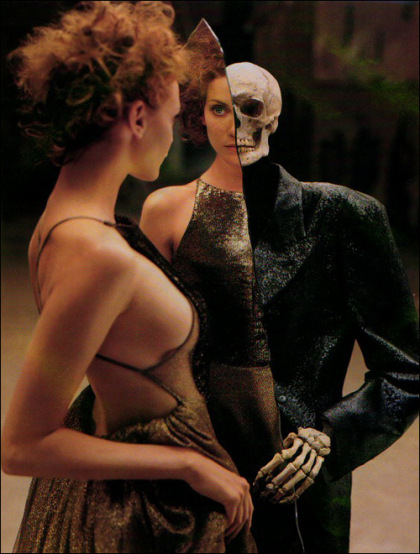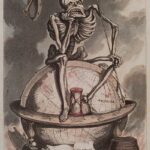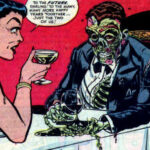Death helps sell, the fascination for death added to the usual censure by media on the subject make it a fine advertising incentive.
In 1992, nearly one million packs of the “Death” brand of cigarettes were sold in the United States. According to Greg Palmer (Death: The Trip of a Lifetime, 1993), cigarette sales actually increased when advertising was first required to include a health warning; Palmer also notes how liquor company advertising agencies sell more booze by associating death with their products. In 1995, a commercial for Tombstone pizza, featured public guillotinings in what looks like late 18th century Paris.

Dead have been requested at several times to play in add spots : James Dean appeared in ads for sneakers, Babe Ruth sold electronics, and Albert Einstein hawking cameras; not to mention the infamous Apple campaign in 2001. Dead people are sexy icons.
You can find the grim reaper, skulls, skeletons, and ghosts everywhere, whether it be candy or movies or video games or characters in books and comics. Some of our favorite movies touch on the fascination with death, such as: “The Seventh Seal”, “Beetlejuice”, “Monkeybone”, “Meet Joe Black”, “Final Destination”, “The Sixth Sense”, “The Frighteners”, “Poltergeist”, “Death Takes a Holiday”, and “The Others”.
A small group of people in today’s society are avid studiers of death, the act and personification, and also the afterlife. They call themselves ‘Ghosts’. Ghosts can usually be found reading up on ghosts, death, and the afterlife; conducting séances and other forms of spiritual communication; hunting for proof of afterlife existence. Ghost culture is fairly small.
Today there are a number of commenters who have spoken on the fascination people have with death. “if it bleeds it leads” is a phrase related to this, meaning that; in the media, the most popular material – as well as most of the material in general – is based on death. For example – death as a topic in the news.
Marilyn Manson often talks and bases his music around the way people are fascinated with death, as well as fame (in relation). He comments on how people will use death to gain a certain immortality in the minds of others (fame). He has further commented that people are willing to die and kill if they know enough people are watching, to gain this immortality or fame. This extends into a social comment on martyrism, television, and the hypocrisy people show between their fascination and thus promotion of death, and their decrement of violence.








